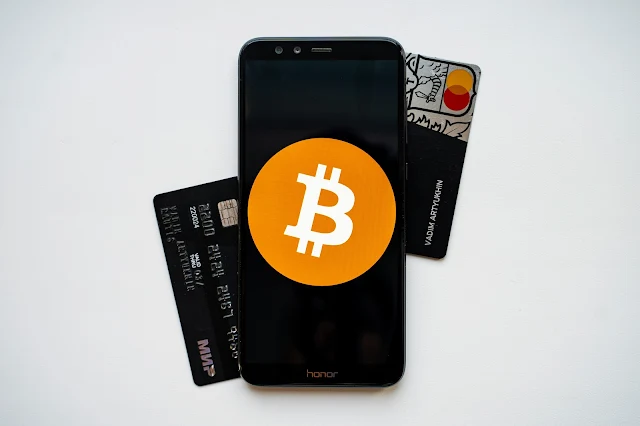As the crypto market gains traction again in 2025, millions of new users are entering the space—and one of the first decisions they face is: “Which crypto wallet should I use?”
Choosing the right wallet is crucial. It’s not just about convenience—it’s about security, control, and long-term usability. In this guide, we’ll walk you through everything you need to know to choose a crypto wallet in 2025, including key types, essential features, and top recommendations based on use-case.
⸻
🔐 What Is a Crypto Wallet?
A crypto wallet is a tool—software or hardware—that allows you to store, send, and receive cryptocurrencies. It doesn’t actually store your coins (those live on the blockchain); instead, it stores your private keys, which prove your ownership of the funds.
Without your private key, you have no access to your crypto. That’s why wallet security is a top priority.
⸻
📦 Types of Crypto Wallets
There are two main categories of crypto wallets: Hot Wallets and Cold Wallets.
🔥 Hot Wallets (Online)
These are wallets connected to the internet. They’re ideal for active users and traders.
• Software Wallets (e.g., Trust Wallet, MetaMask)
• Mobile Wallets (e.g., Exodus, Atomic)
• Web Wallets (e.g., Coinbase Wallet, Blockchain.com)
Pros:
• Fast and user-friendly
• Easy access to DeFi apps and exchanges
• Multi-token support
Cons:
• More vulnerable to hacking and phishing
• Depends on internet connection
❄️ Cold Wallets (Offline)
These store your keys offline and are ideal for long-term holders (aka “HODLers”).
• Hardware Wallets (e.g., Ledger Nano X, Trezor Model T)
• Paper Wallets (printed QR codes or keys)
Pros:
• Maximum security
• Immune to online attacks
• Great for large holdings
Cons:
• Not beginner-friendly
• Slower to access funds
• Can be lost or physically damaged
⸻
🛡️ Security Features to Look For
Before choosing a wallet, consider these non-negotiable security features:
1. Private Key Control: Do you own your keys? If not, it’s not your wallet.
2. Backup & Recovery Options: Make sure you can recover your funds with a seed phrase.
3. Multi-Factor Authentication (2FA): Adds a second layer of protection.
4. Open-Source Code: Transparent wallets let the community audit the code.
5. Biometric Security: Some mobile wallets support fingerprint or face ID.
Pro tip: Never share your recovery phrase. Not even with support teams.
⸻
🧠 Other Features Worth Considering
Beyond security, here are useful features for 2025 users:
• NFT Support: If you deal in NFTs, look for wallets like MetaMask or Trust Wallet.
• Cross-Chain Compatibility: Can the wallet handle BTC, ETH, BNB, Solana, and newer chains like TON?
• DeFi Integration: Some wallets let you stake, swap, or farm directly inside.
• Hardware Support: Some software wallets integrate with Ledger or Trezor for added safety.
⸻
🏆 Best Crypto Wallets in 2025 (By Use Case)
✅ Best for Beginners: Trust Wallet
• Multi-asset support (ETH, BNB, BTC, NFTs)
• Easy UI and backup
• Mobile-only, but perfect for casual users
✅ Best for Active Traders: MetaMask
• Deep DeFi integration (Uniswap, Aave, etc.)
• Works as browser extension + mobile app
• Supports multiple EVM networks
✅ Best for Long-Term Holding: Ledger Nano X
• Cold storage with Bluetooth support
• Supports 5,500+ coins and tokens
• Industry-grade encryption
✅ Best for Security Nerds: Trezor Model T
• Touchscreen hardware wallet
• 100% open-source firmware
• Shamir Backup (advanced recovery method)
✅ Best for NFT Users: Exodus
• Supports multiple chains and NFTs
• Built-in exchange features
• Great desktop & mobile versions
⸻
🧪 Bonus Tip: Avoid “Custodial” Wallets Unless Necessary
A custodial wallet is one where a third party (like an exchange) holds your private keys. Think Binance, Kraken, or BitMart. They’re fine for quick trades but not for long-term storage.
If the platform goes down, gets hacked, or freezes withdrawals—you could lose access. Always withdraw large holdings to a wallet you control.
⸻
🚨 Common Mistakes to Avoid
• Using a wallet without writing down your recovery phrase
• Falling for fake wallet apps on the App Store or Google Play
• Sending coins to the wrong chain (e.g., sending ETH to a BTC address)
• Not keeping backups stored in multiple secure locations
⸻
✅ Final Thoughts
In 2025, choosing the right crypto wallet is more than just picking an app—it’s choosing how much control and security you want over your digital assets.
Whether you’re a beginner just getting started, or an investor holding thousands in tokens, make sure your wallet fits your needs.
Your keys. Your coins. Your responsibility.

